* All About Multirotor Drone FPV Antennas
The Drone FPV Antenna is perhaps the most overlooked FPV component.
However, without antennas wireless communication between the video transmitter
and video receiver or radio and radio receiver would not be conceivably possible.
This article will serve to outline the function of an antenna as well as the properties
of different antenna types.
What is a Drone FPV Antenna and how does it work?
An antenna is effectively a transducer; a device that transforms electrical energy
into electromagnetic radiation such as radio waves. When an electrical current is passed
through a wire a magnetic field is produced around the wire. In two closely approximated
wires carrying oppositely charged currents, the magnetic fields will be opposed and will
essentially cancel each other out. However, if the orientation of these positive and
negative wires is correctly manipulated, they will be capable of successfully propagating
electromagnetic radiation in the form of radio waves. In essence, this is an antenna.
There is no particular difference between a transmitting antenna and a receiving antenna,
any antenna may be used for either purpose. However, appropriateness of the antenna
selection should be carefully considered. Antenna suitability will be discussed later in the article.
Frequency
Antennas used in FPV are always tuned to a particular radio frequency.
The two most commonly used frequencies in FPV are 2.4GHz and 5.8GHz, for radio
link and video link respectively. Hertz (unit: Hz) is a measure of how many wavelengths
a wave oscillates through in one second. Picture a slinky being stretched out and rapidly
shook from left to right. Portions of the slinky will periodically mirror this shaking action
as it moves along the length of the slinky, rising and falling before repeating the cycle again.
The distance between a pair of crests and peaks is a singular wavelength.
Lower radio frequencies for radio control and video transmission,
such as 915MHz are often used when long range flight is a priority.
Directional and Omnidirectional Antennas
he different types of Drone FPV Antenna radiation patterns can be divided into two
categories based on the directivity of the beam; directional and omnidirectional.
Directional antennas are optimized for beaming a signal over long distances and in
a very specific direction. Omnidirectional, as the name suggests, are best suited for
the radiation of a radio signal in as many directions as possible, but over a relatively
shorter range.
The radiation pattern of the directional antenna can be pictured as being conical,
the point of the cone originating at the antenna. As the cone projects from the antenna
it gradually widens, before eventually coming to an end. Any object within the range
of this cone will be capable of receiving the transmitted signal, or transmitting its
own signal to the receiving antenna. Directional antennas are best suited for
receiver-side applications, where they can be positioned to allow optimal reception
of the signal transmitted by the video transmitter. As for omnidirectional antennas,
their evenly distributed radiation pattern is shaped as if a donut has been slid over
the top of the antenna, the active site of the antenna surrounded by the donut.
The radiation pattern of an omnidirectional antenna can be clearly pictured as being
particularly well dispersed in all directions around the antenna except directly above
and below the antenna. An omnidirectional antenna is typically used with the video
transmitter, as the omnidirectional antenna is well adapted to overcoming sudden
changes in the attitude and direction of an aircraft’s flight.

Gain is measured by the unit “dBi”. Gain is a measurement of how efficiently an
antenna can transmit electromagnetic radiation in a certain direction.
A Drone FPV Antenna with a high gain is very efficient at transferring electromagnetic
radiation, and will have a very concentrated and narrow beam. Antennas with a lower
gain will have a rounder radiation pattern, although they are poor at transmitting a
signal over a long distance, low gain antennas excel at high quality short range
transmission and reception.
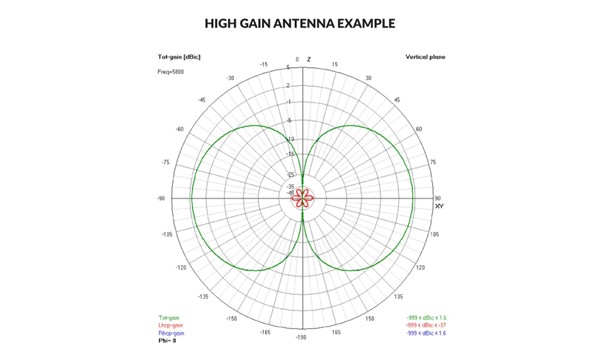
Drone FPV Antenna Polarization
There are two varieties of antenna polarization: linear and circular.
The key difference between linear and circular polarization is how the radiation pattern
of their respective waves propagates. A linear antenna projects a wave along a singular
plane, vertical or horizontal. This type of polarization allows more energy to be conveyed,
because the wave is simply moving in one direction.
However, penetration of obstacles is reduced due to the difficulty a linear wave
faces in navigating around an object that is within its plane of propagation.
A circularly polarized antenna emits a wave in a corkscrew fashion, this type of wave
periodically spirals through both the vertical and horizontal plane. As a result, the circularly
polarized antenna is a more proficient contender for applications that require
obstacle penetration; typical FPV park flying, for example.
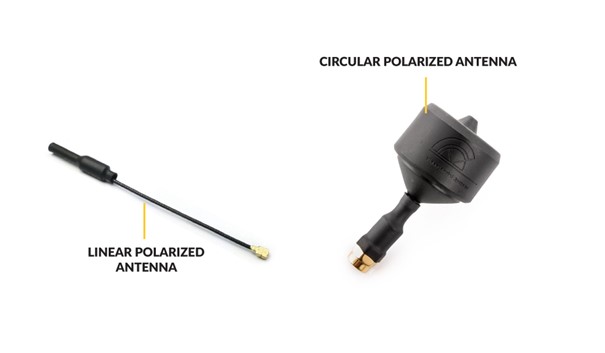
There are a further two categories of circular polarization, left hand circular polarization
and right hand circular polarization. LHCP and RHCP can be thought of as being similar
to the thread of a screw. As the radio waves transmitted by a circularly polarized antenna
rotate towards the awaiting receiver, they tend to rotate clockwise (right) or counter-clockwise (left).
Signals emitted by RHCP antennas may only be successfully captured by other
RHCP antennas and vice versa.
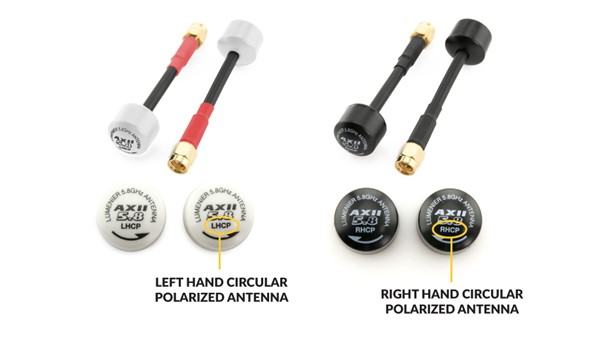
A Drone FPV Antenna utilise a specialised type of wire to convey an electric current to
the active site of the antenna. This wiring is known as coaxial cable. Coaxial cable is
composed of four main components: the jacket, centre conductor, shielding and the insulator.
The centre conductor is usually a thick single strand copper wire that is surrounded by the
insulating layer, typically a thin plastic tube. The shielding constricts the insulating layer,
a network of fine wires that entirely cover the outer surface of the coaxial cable.
Occasionally, an extra layer of insulating plastic (the jacket) is wrapped around the
shielding surface. The purpose of coaxial cable is to maintain very close proximity
of the centre conductor and shielding to inhibit the formation of unwanted magnetic
fields, as the opposite magnetic fields formed around each oppositely charged
wire will cancel each other out.
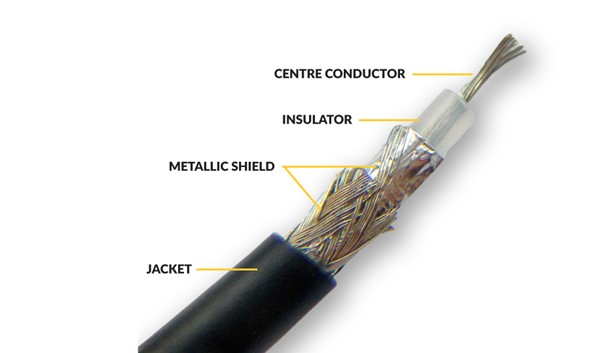
There are a wide range of varying connectors used for the temporary mating of a Drone FPV
Antenna to a video transmitter or receiver. The most commonly used antenna connectors
are the SMA and RP-SMA connectors. The next most popular connector is the tiny UFL.
The UFL is far more compact than the SMA, although, it is more prone to detaching from
the video transmitter as well as the connective elements being quicker to degrade.
More recently, the MMCX style connector has been gaining traction,
providing a suitable middle-ground between the SMA and UFL.
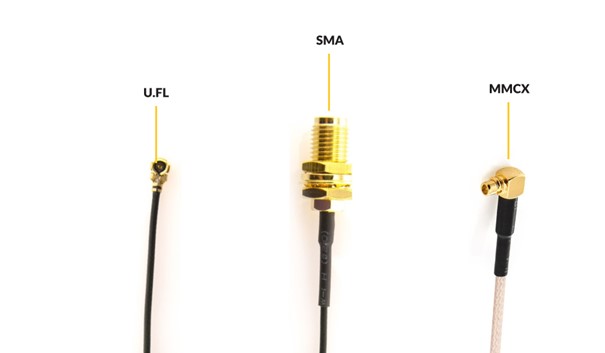
There are a variety of different available antennas, each better suited for a particular task.
Below, a selection of antennas commonly used for FPV flight are detailed and discussed.
Monopole
The monopole antenna consists of a singular straight wire which is typically mounted
perpendicular relative to the ground. The monopole is a type of omnidirectional antenna
and is linearly polarized. The monopole antenna is commonly used in the radio transmitter
and radio receiver. Occasionally, the monopole is used in conjunction with a video transmitter
in micro size multicopters, as its low profile and light weight is favourable for racing applications.
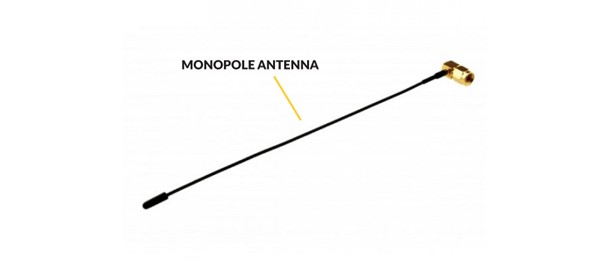
The dipole is similar to the monopole in that it is an omnidirectional linear antenna.
The dipole is configured as if two monopoles have converged end to end. Dipoles are
usually used in the transmitting or receiving end of long range radio control systems.
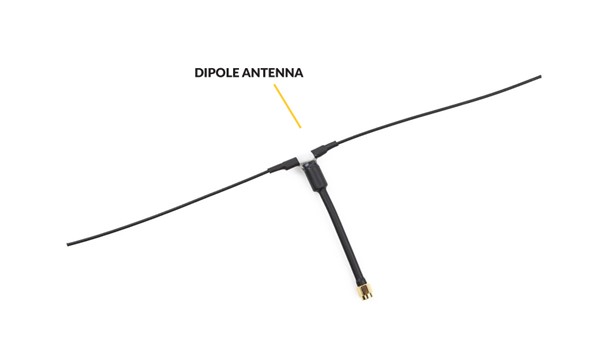
Skew planar, or cloverleaf antennas are omnidirectional circularly polarized antennas that
are constructed of a collection of wire lobes connected to the tip of a length of coaxial cable.
These antennas are almost exclusively used in conjunction with a video transmitter,
or as a video receiver antenna.
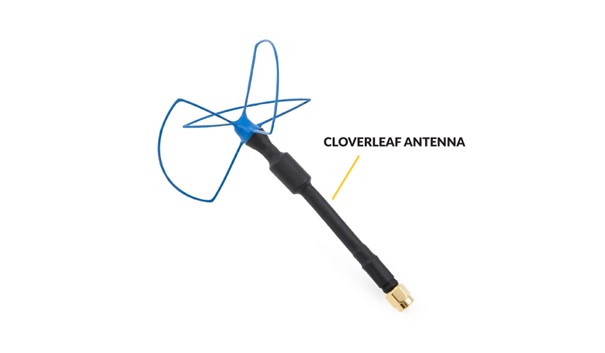
The pagoda is a more recently developed omnidirectional circularly polarized antenna.
It is advantageous over the skew planar/clover leaf design due to its comparatively low cost
and simple PCB construction. It is also most popularly used as a video transmitting antenna,
or as a video receiving antenna.
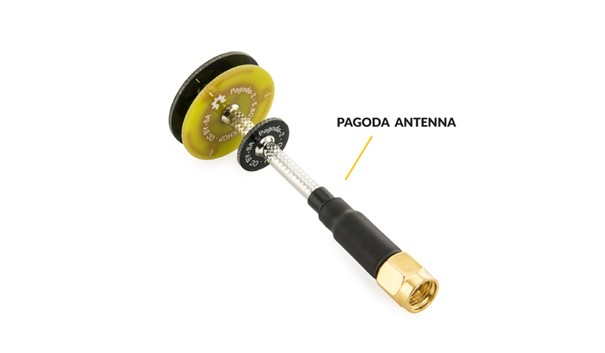
The helical design is a directional circularly polarized antenna. The helical is optimal for
use as a video receiver antenna during long range flights in which penetration must also be
maximised. However, the bulkiness of the helical can provide difficulty during safe
transportation of the antenna and installation on the video receiver.
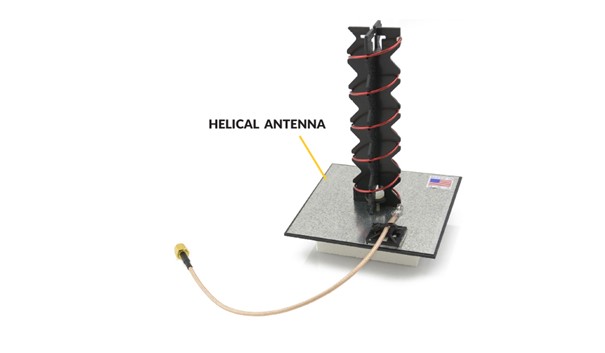
A directional linearly polarized antenna. The patch is another directional antenna
favored for use as a video receiver antenna. The patch is compact and rugged, making it
easier to mount and transport than the helical antenna.
Patch antennas are often less expensive than the comparable helical.
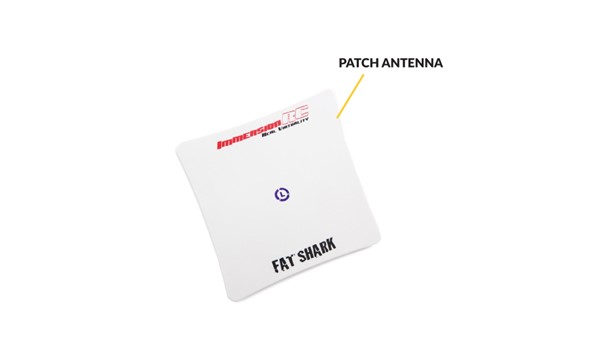
Antenna Diversity
With antenna diversity two antennas can be used synchronously to achieve higher quality
and more reliable signal reception. For example, a directional linearly polarized antenna and
circularly polarized omnidirectional antenna may be used in tandem to effectively obtain greater
range in a certain direction while maintaining reception if the quad is to pass out of range
of the directional antenna.
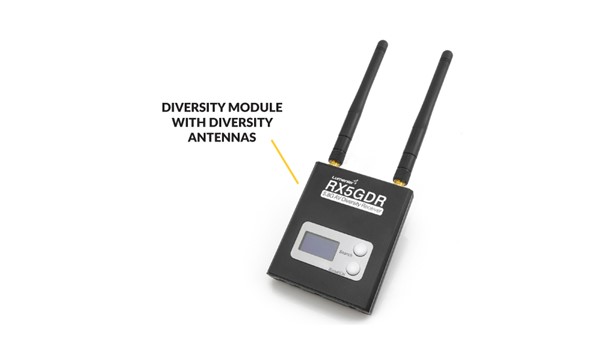
Conclusion
In summary, there is no “Swiss army knife” Drone FPV Antenna.
Each individual antenna is designed for a specific application, be it as a receiving antenna,
transmitting antenna, for extreme obstacle penetration or maximum range. It is worthwhile to
have a small arsenal of antennas on hand as a carefully planned response for any extreme
changes in the flying situation.
